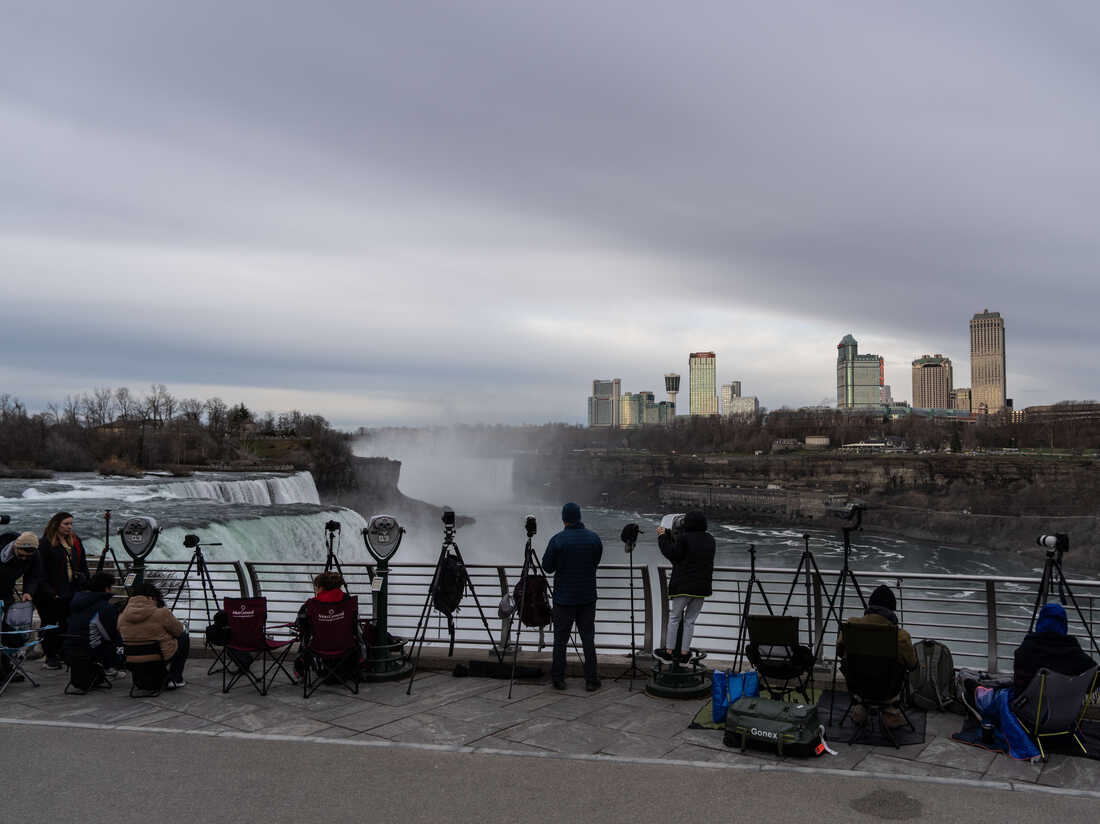Solar Eclipse
Americans await the eclipse, with glasses secured and fingers crossed for clear skies
Photographers get in to position for the eclipse early Monday morning in Niagara Falls, New York.
Adam Gray/Getty Images
hide caption
toggle caption
Adam Gray/Getty Images
Photographers get in to position for the eclipse early Monday morning in Niagara Falls, New York.
Adam Gray/Getty Images
Follow the NPR Network’s coverage from the path of totality, from Texas to Maine.
After countless road trips, hotel bookings, glasses purchases and fingers crossed for good weather, the day millions of Americans have been waiting for is finally here.
A rare total solar eclipse — the last one to be visible in the contiguous U.S. for another two decades — will cross from Texas to Maine, putting over 30 million people in the direct path of totality and giving many more a chance to see a partial eclipse.
Totality will start in the U.S. around 1:30 p.m. CT/2:30 p.m. ET and continue for about an hour, lasting for several minutes in each location (you can check yours here, and follow along online even if you’re outside the path).
There is much anticipation and preparation heading into the day, as people have made travel plans, organized viewing parties, broken out their red and green gear and generally gotten ready to make the most of a brief moment of daytime darkness.
Communities in the path of totality have made preparations too. Officials in Houlton, Maine — the last U.S. city in the eclipse’s path — have spent over two years planning days of festivities.
Loading…
And in recent days, the governors of Arkansas and Indiana, as well as several counties and cities in states across the eclipse’s path, have declared states of emergency to make more resources available to deal with the influx of visitors and traffic.
Traffic and weather are among the biggest variables for how the day could go.
The National Weather Service (NWS) said Monday morning that clouds could impede viewing from Texas into southern Arkansas, as well as across Ohio, northwest Pennsylvania and New York, with a 20-30% chance of rain in those areas.
The best chances for clear viewing are most likely across New England, it says, and possible from northern Arkansas to central Indiana — though there is still a high potential for cloud cover there.
It is also warning that severe weather and flash flooding could develop around and after the time of totality in parts of Texas into south Oklahoma, southwest Arkansas and west Louisiana, bringing possible tornadoes, large hail and severe wind gusts.
Eclipse chasers have told NPR it’s still possible to enjoy the eclipse even if the weather puts a damper on your view.
And the NWS, which plans to issue a final weather update at noon ET, says the forecast could still change: “Totality or bust, check the forecast and adjust!”
NPR will be sharing highlights from across the NPR Network throughout the day Monday if you’re unable to get out and see it in real time.
This page will be updated throughout the day.
